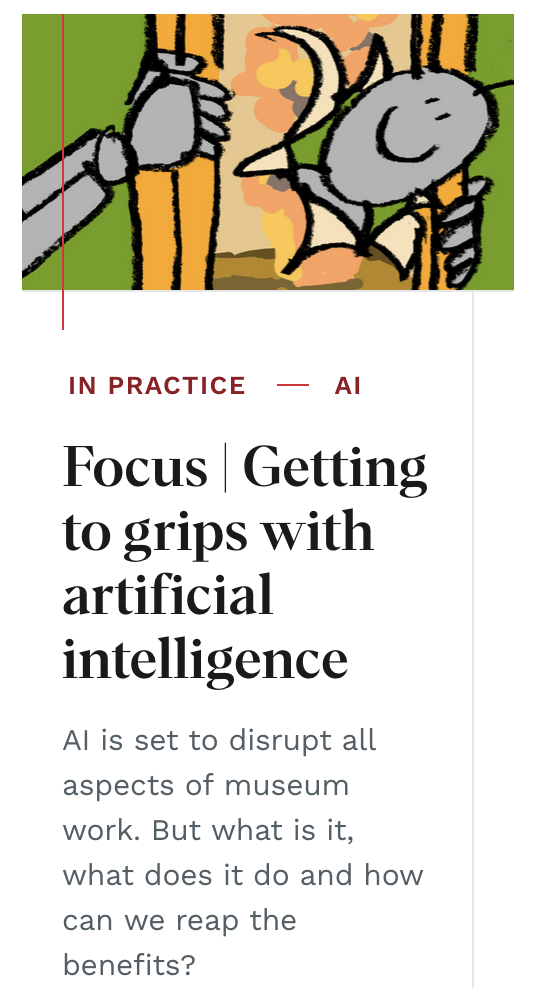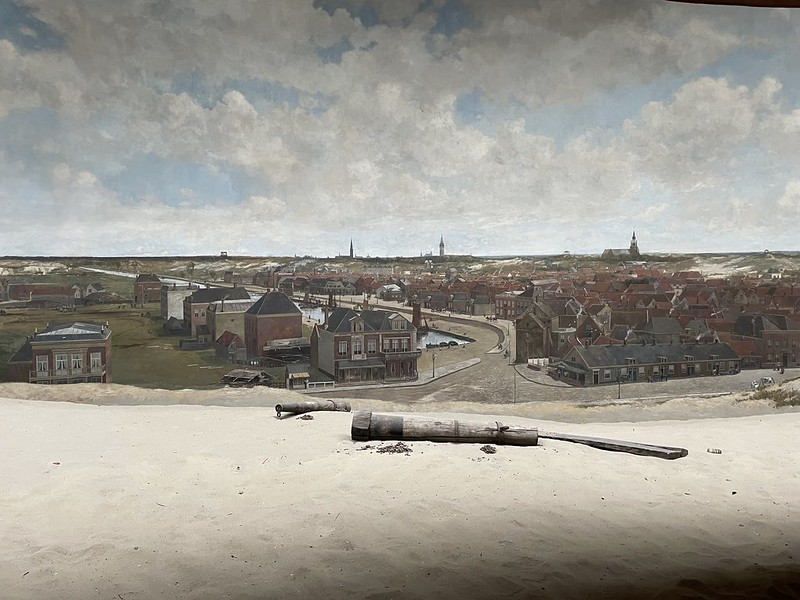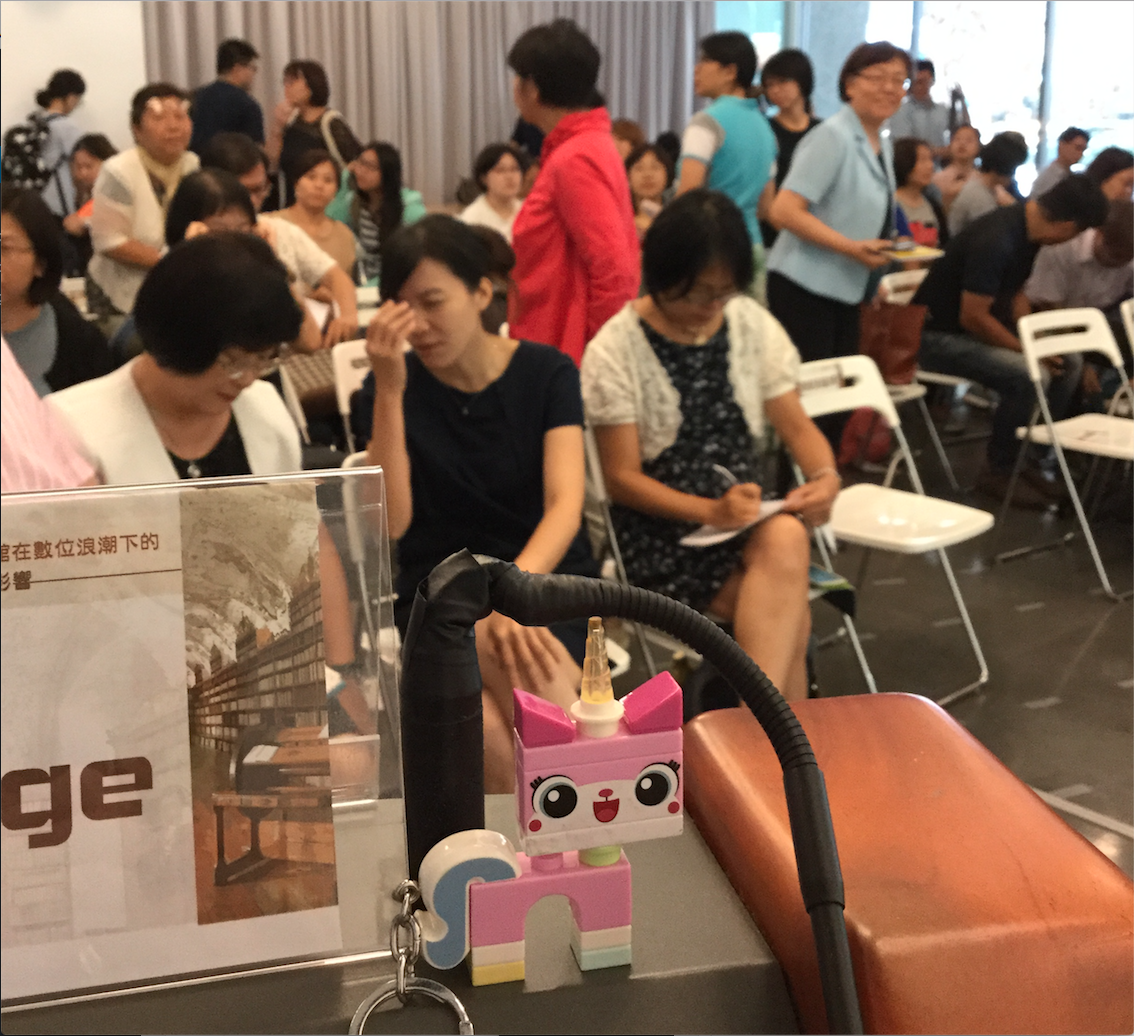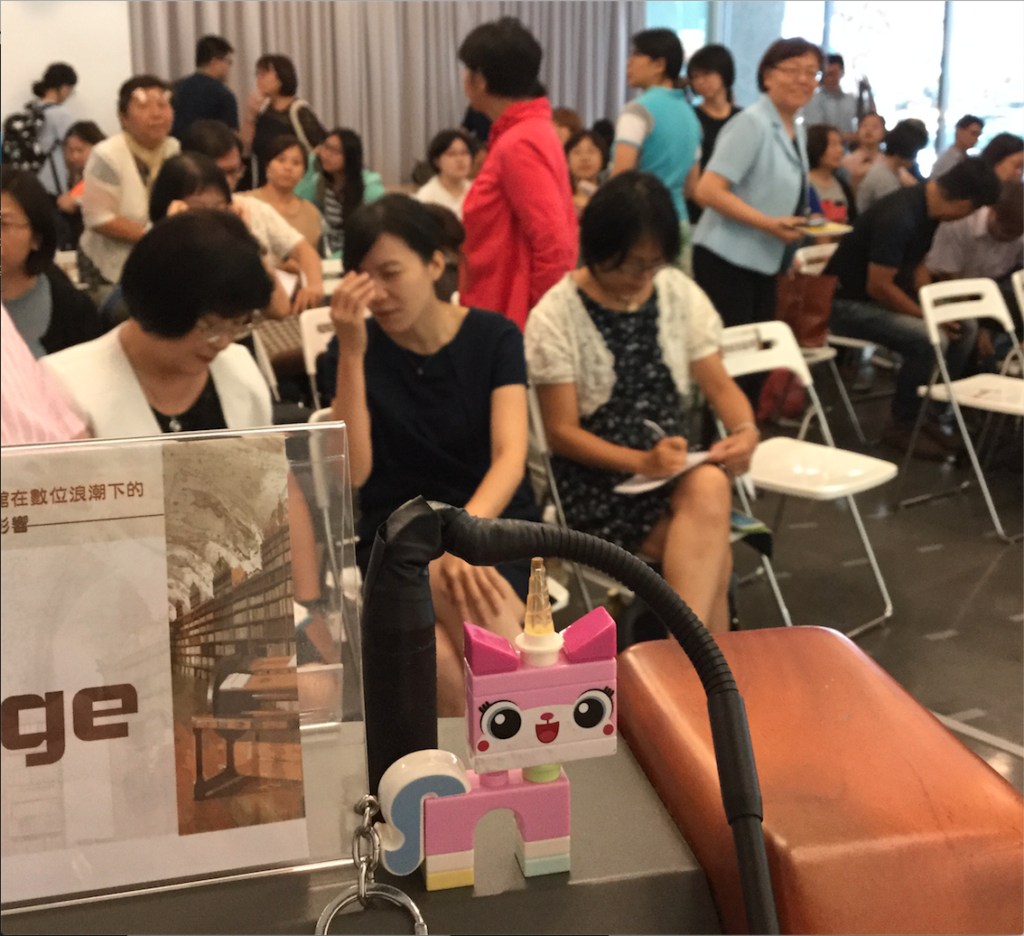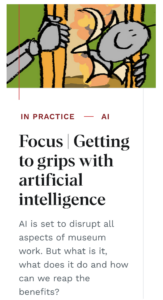
I'm excited to see the Museums Association Museums Journal article on 'Getting to grips with artificial intelligence' by Julie Nightingale go live, as I'm quoted a few times. It feels like months since I talked to the author – a long time in AI, but a relatively short time in digital heritage.
Here's some of what I had to say: 'The British Library’s Ridge suggests people play around with AI to understand what might be coming.
“AI literacy is an important part of good governance,” she says. “People need a solid understanding of where biases are likely to appear, how to review and contest decisions made by algorithms and where sharing data might have privacy or legal implications, so that they can make good decisions about the products they buy or implement. It also helps people plan so that AI tools enhance jobs, rather than attempting to replace them.”'
